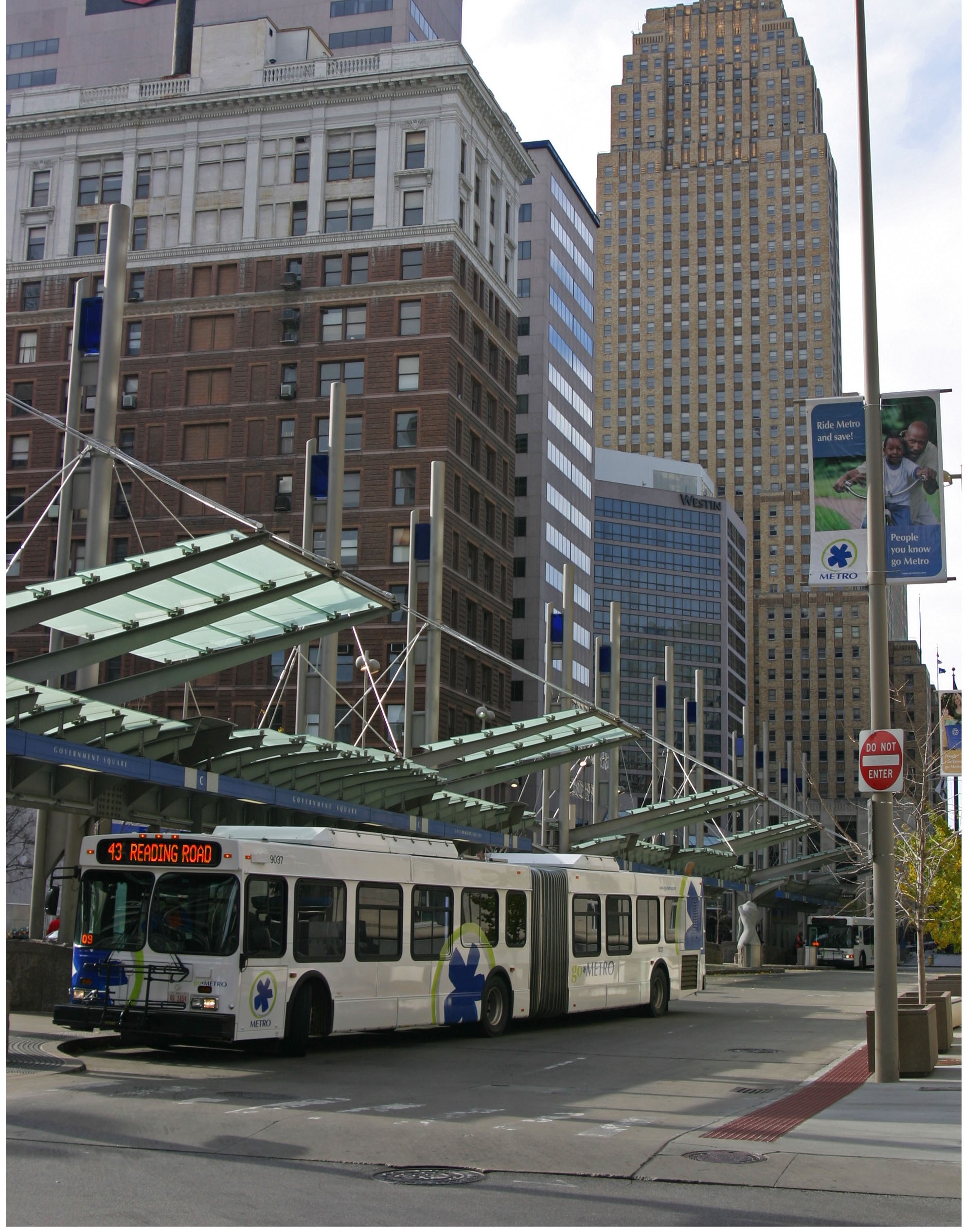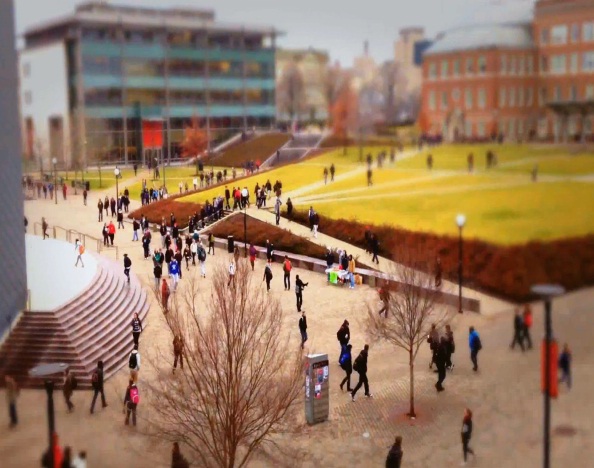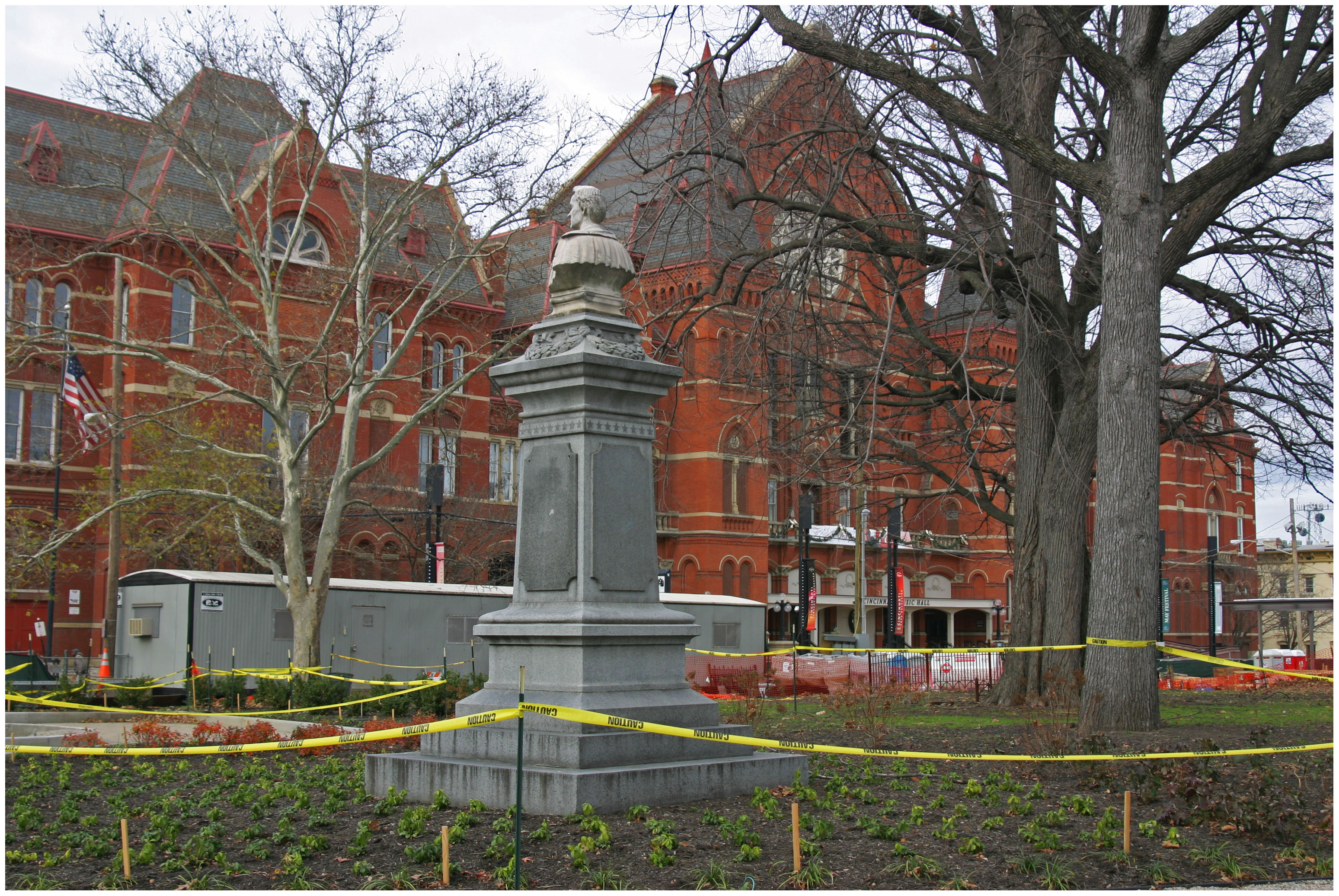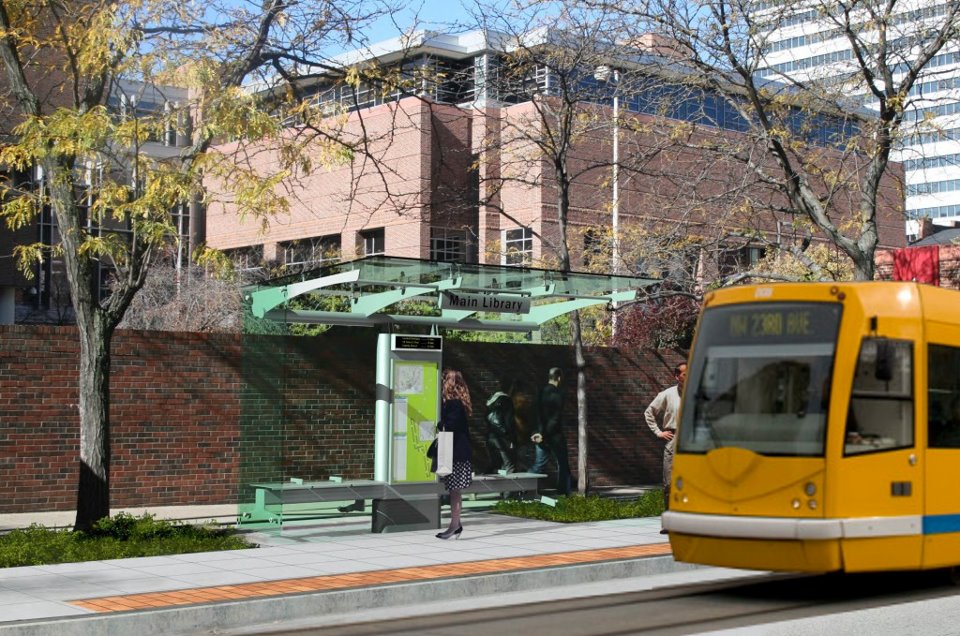This Friday hundreds of people will gather at Memorial Hall to celebrate the groundbreaking of the Cincinnati Streetcar. Appropriately so, the event will take place in the city’s oldest neighborhood and right outside of Washington Park which has long served as a prominent landmark within the region’s urban core.
Cincinnati is changing, and as a city with a prominent history, Cincinnati is working to reconnect with its past during this process. But the people are not the same as they were in the past. There are new faces and a new culture.
At the center of this change is the redevelopment of Over-the-Rhine. From the remodeling of Italianate brownstones to the renovation of Music Hall this change can be seen everywhere. However, no change has been as significant, both in scale and in reconnecting with the significance of the past as the $48 million renovation of Washington Park.
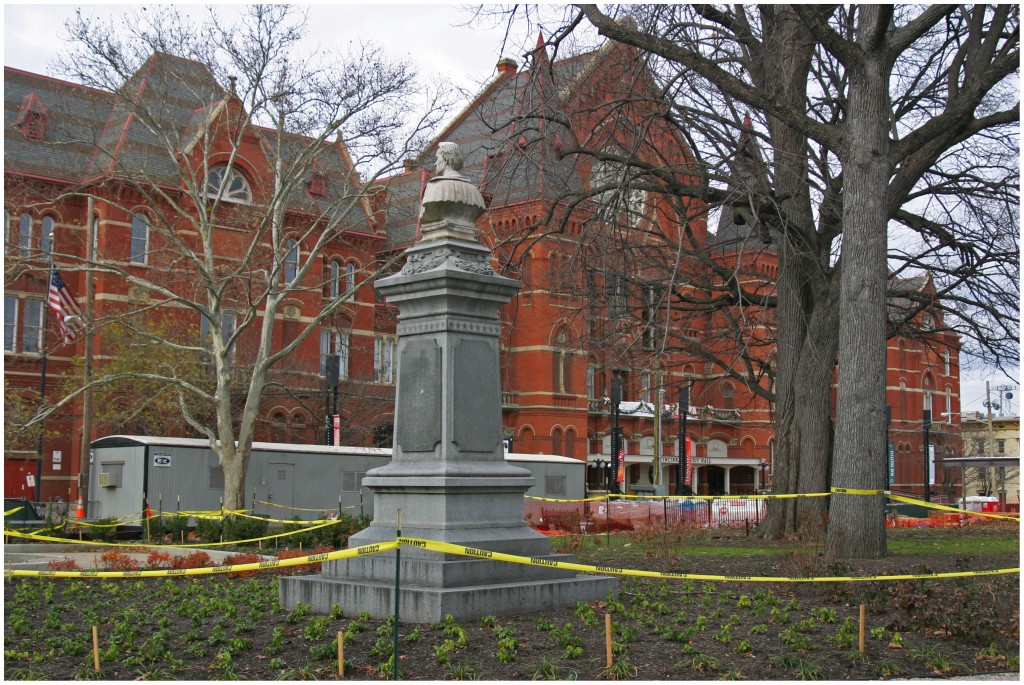
Cincinnati’s majestic Music Hall overlooks Washington Park. Photograph by Randy A. Simes for UrbanCincy.
In 1888, Washington Park hosted the Centennial Exposition of the Ohio Valley and Central States. With the newly created Music Hall illustriously lining Elm Street, Washington Park, only 33 years old at the time, showcased progress the Northwest Territory and city of Cincinnati had made in a century’s time. The exposition presented the urban development of a thriving city, and the economic and social progress of the United States, to the rest of the nation.
It has been a long time since 1888, and in 2010 the Cincinnati Center City Development Corporation (3CDC) began upgrading Washington Park to meet the needs of a changing urban core. The park’s historical significance has been on the mind of the developers since the very beginning.
“Everything we do is greatly influenced by history,” 3CDC Vice President of Communication, Anastasia Mileham, told UrbanCincy. From Civil War cannons to head plaques from the Presbyterian cemetery that once occupied the site; the renovated park will be filled with artifacts and reminders of the past.
Project officials say that the changes taking place at Washington Park are about more than just nostalgia, however, and will serve to help advance the urban revitalization taking place in Over-the-Rhine.
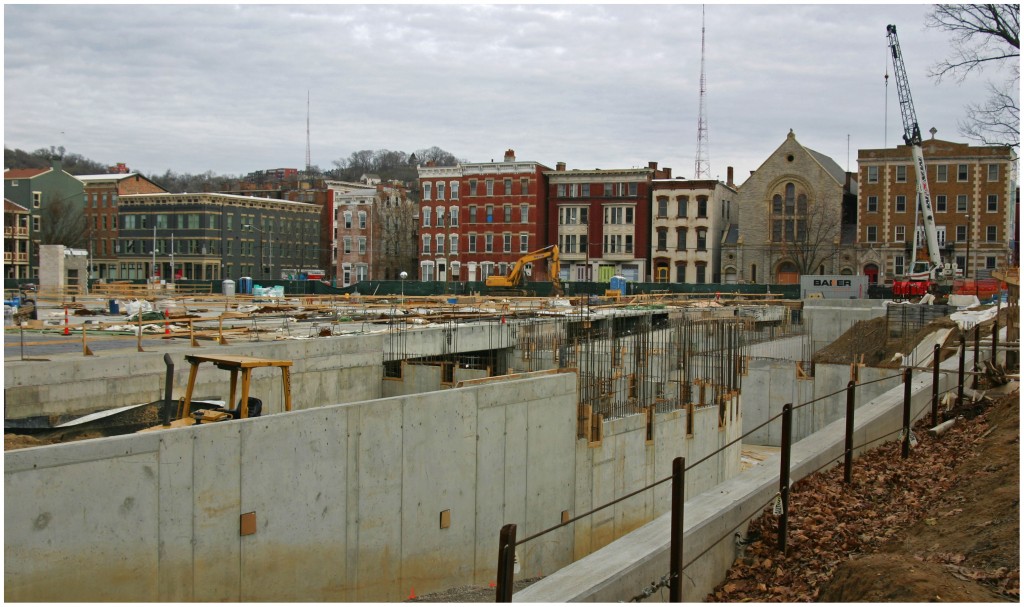
Construction work progresses at Washington Park in November 2011. Photograph by Randy A. Simes for UrbanCincy.
“This will be a great civic space similar to Fountain Square,” Mileham explained. “Once finished, the park will have the potential to be the heart of the community as it once was.”
The people who make up Cincinnati have also changed greatly over the past 124 years. Today Over-the-Rhine is the definition of a multigenerational and multiethnic district. With a two-acre expansion, an underground parking garage, an interactive water fountain, and a grand performance stage, the new Washington Park will seemingly be a place for individuals and families alike – a reflection of the changing neighborhood.
“If you want to stroll through the park, walk your dog in the fenced in dog park, or listen to the CSO perform on a Sunday evening, then Washington Park is for you,” Mileham said, “It has features for everyone, and will make a mixed neighborhood in every sense of the word.”
As Cincinnati changes, so too does our understanding of its history. Washington Park is in part a monument to the past. It is a monument to what Cincinnati once was. But as the city takes on new shapes and sizes, and becomes increasingly diversified, Washington Park will also serve as a bridge. A cultural connection and a monument to what Cincinnati has become.

